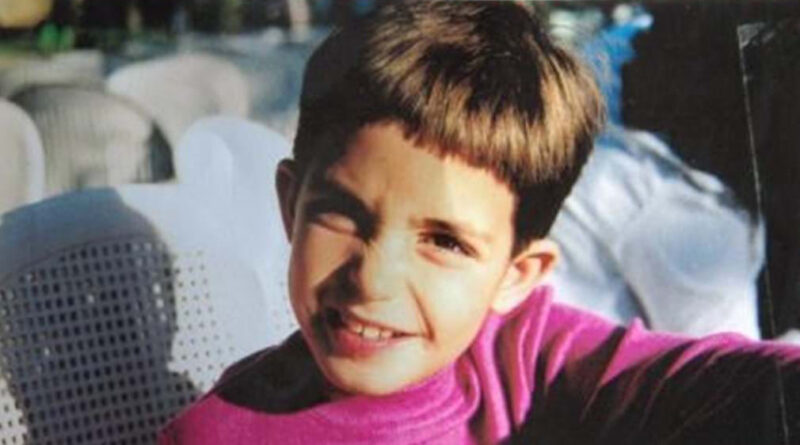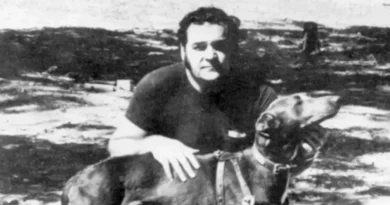Joana Isabel Cipriano Guerreiro Disappearance in Portugal
On August 12, 2004, eight-year-old Joana Isabel Cipriano Guerreiro disappeared from her small village of Figueira, near Portimão in Portugal’s Algarve region. What began as a search for a missing child soon spiraled into a case marked by gruesome allegations, controversial confessions, and claims of police brutality. Nearly two decades later, the case remains one of Portugal’s most haunting mysteries.
Joana Cipriano’s Disappearance
Joana lived in a modest home with her mother, Leonor Cipriano, and her siblings. On the day she disappeared, Joana had gone to a local shop to buy milk and tuna at her mother’s request. Witnesses confirmed she was last seen leaving the store and heading home.
When Joana failed to return, Leonor reported her missing. Initially, the community and police treated her disappearance as an ordinary missing child case, with neighbors and local authorities searching the village and its surroundings. However, as days turned into weeks, there was no sign of Joana, and suspicions began to rise.
The Investigation: Allegations Against Joana’s Family
With no evidence of Joana being abducted by a stranger, investigators turned their attention to those closest to her. Leonor Cipriano and her brother, João Cipriano, became the focus of the investigation.
In October 2004, months after Joana vanished, both Leonor and João confessed to murdering the child. João claimed they killed Joana after she walked in on an incestuous encounter between the two siblings. According to João, Joana’s body was dismembered and disposed of in a pigsty. However, Joana’s remains were never recovered, and there was no physical evidence linking them to the alleged crime.
Controversial Confessions and Police Brutality Allegations
Leonor later retracted her confession, alleging that it was coerced through brutal physical abuse by officers of the Polícia Judiciária (PJ), Portugal’s criminal investigation police. Photographs of Leonor taken during her detention showed her with severe bruising, black eyes, and facial injuries.
The PJ denied allegations of torture, claiming Leonor had injured herself by throwing herself down stairs in an attempted suicide. However, Leonor’s account of police violence, coupled with the graphic nature of her injuries, raised questions about the legitimacy of her confession.
Trials and Convictions
Despite the lack of physical evidence and the controversy surrounding the confessions, both Leonor and João Cipriano were convicted of Joana’s murder in 2005. Each was sentenced to 16 years in prison.
Leonor’s imprisonment was particularly contentious, given her repeated claims of innocence and the lingering allegations of police misconduct. João, however, did not withdraw his confession, further muddying the waters about what truly happened to Joana.
Police Misconduct and the Conviction of Gonçalo Amaral
The case took another dramatic turn when five officers involved in the investigation, including Chief Inspector Gonçalo Amaral, were charged with falsifying documents and torture. Gonçalo Amaral, who would later become infamous for his involvement in the Madeleine McCann case, was convicted of falsifying evidence in 2009. He received an 18-month suspended sentence.
These developments deepened public mistrust of the police and cast further doubt on the integrity of the investigation. The brutality allegations against the PJ raised broader concerns about the methods used in high-profile cases in Portugal.
The Fate of Leonor Cipriano
Leonor served 14 years of her 16-year sentence before being released on parole in 2019. Upon her release, she continued to assert her innocence and expressed a desire to uncover the truth about Joana’s disappearance. Her release reignited public interest in the case, with many questioning whether justice had truly been served.
Theories and Speculations About the Disappearance of Joana Cipriano
The disappearance of eight-year-old Joana Cipriano on August 12, 2004, from the village of Figueira in Algarve, Portugal, has sparked numerous theories and speculations. The case is riddled with contradictions, allegations of misconduct, and unanswered questions. Theories about what happened to Joana range from family involvement to abduction, trafficking, and even organized crime. Below is an in-depth examination of the prevailing theories and the controversies surrounding her case.
Family Involvement: The Convictions of Leonor and João Cipriano
One of the most controversial theories is that Joana’s mother, Leonor Cipriano, and her uncle, João Cipriano, were directly involved in her disappearance and presumed death.
According to their confessions—which they later retracted—Joana walked in on an incestuous relationship between Leonor and João. In a panic, they allegedly killed her to silence her. João claimed that they dismembered her body and disposed of the remains in a pigsty, though no evidence was ever found to substantiate this claim.
Critics of this theory argue that:
- The confessions were coerced through physical abuse by Portuguese police, as evidenced by photographs showing Leonor with severe bruising and injuries during her detention.
- No forensic evidence, such as blood or remains, was found to support the idea that Joana was killed and dismembered.
- The lack of a body or corroborating evidence leaves room for doubt about whether Joana was murdered at all.
Some believe Leonor and João were convenient scapegoats in a case that lacked leads, with law enforcement under pressure to provide answers to the public.
Abduction by a Stranger
The theory that Joana was abducted by a stranger while walking back from the store remains plausible, though it was not the primary focus of the investigation. This theory posits that Joana, like many children abducted globally, could have been targeted by a predator while she was unaccompanied.
Supporting this theory:
- Witnesses confirmed that Joana was last seen leaving a local store to return home, a moment when she would have been vulnerable.
- No physical evidence of foul play was found in Leonor’s home or surroundings, suggesting Joana’s disappearance could have occurred elsewhere.
However, police initially dismissed the possibility of stranger abduction, focusing instead on Joana’s family. This has led to criticism that valuable time and resources were not dedicated to exploring other suspects or leads.
Human Trafficking
Another theory is that Joana was abducted and trafficked, potentially for exploitation. Human trafficking networks have been known to target children in vulnerable situations, particularly in regions with active criminal networks.
This theory is supported by:
- The proximity of Figueira to international transportation hubs, including ports and highways, which could facilitate trafficking.
- The lack of any trace of Joana’s body, which could indicate she was taken rather than killed locally.
- Similarities to other high-profile cases, such as the disappearance of Madeleine McCann in nearby Praia da Luz in 2007, which also raised concerns about trafficking networks operating in the Algarve.
Despite its plausibility, this theory remains speculative due to a lack of direct evidence linking Joana’s disappearance to trafficking.
Organized Crime
Some speculations suggest that Joana’s disappearance could have involved organized crime, particularly in connection to debts or illicit activities involving her family. While no concrete evidence has been made public to substantiate this claim, it is not uncommon for criminal elements to target families or communities with ties to illegal operations.
Proponents of this theory highlight:
- João Cipriano’s criminal history, which included involvement in illegal activities prior to Joana’s disappearance.
- The possibility that Joana’s disappearance was a warning or retribution against the family.
However, like the trafficking theory, there is no hard evidence to support this claim, and it remains largely speculative.
Police Misconduct and a False Narrative
One of the most contentious aspects of the case is the role of the Polícia Judiciária (PJ) in the investigation. Allegations of police misconduct and torture have led to widespread speculation that the official narrative of Joana’s disappearance may be false or incomplete.
Key points fueling this theory include:
- Leonor Cipriano’s allegations that she was brutally beaten during interrogation to force a confession. Photographs taken during her detention showed severe bruising, black eyes, and other injuries, which the police claimed were self-inflicted.
- The conviction of Gonçalo Amaral, the lead investigator, for falsifying evidence in the case. Amaral’s reputation was further tarnished during his later involvement in the Madeleine McCann investigation, leading to questions about his methods and credibility.
- The lack of transparency and inconsistencies in the police investigation, including failure to follow up on alternative leads or suspects.
This theory suggests that the focus on Leonor and João Cipriano may have been an attempt by the PJ to close the case quickly, regardless of the truth.
Joana is Alive
A minority theory posits that Joana may still be alive and living under a new identity, either voluntarily or due to coercion. Some who subscribe to this idea believe that Joana may have been taken in by someone who wished to shield her from a troubled home environment. Others suggest that she could have been relocated as part of a broader conspiracy.
This theory has little direct evidence to support it but persists due to the complete absence of Joana’s remains or any conclusive proof of her death.
Lingering Questions and Unresolved Mysteries
The lack of definitive answers in Joana Cipriano’s case leaves many questions:
- If Leonor and João were truly responsible, why has no physical evidence been found to confirm their involvement?
- Were there other suspects or alternative leads that were ignored in the rush to secure convictions?
- Could Joana have been a victim of organized trafficking or abduction, and did police mishandle critical early stages of the investigation?
- How much of the case has been influenced by systemic failures in law enforcement and judicial oversight?
Comparisons to the Madeleine McCann Case
Joana’s disappearance is often compared to the case of Madeleine McCann, who vanished from Praia da Luz, Algarve, in 2007—just three years after Joana’s disappearance. Both cases exposed significant flaws in Portugal’s criminal justice system, particularly in handling missing children cases. However, unlike the McCann case, Joana’s family members became the primary suspects, overshadowing the possibility of alternative theories.
Legacy of the Case
The murder of Joana Cipriano remains a tragic chapter in Portuguese history, highlighting both the complexities of criminal investigations and the devastating impact of injustice. Her case serves as a stark reminder of the need for transparency and accountability in law enforcement.
While some continue to call for renewed investigations or technological advancements like DNA analysis to shed light on her disappearance, Joana’s case stands as an enduring mystery—a story of a young girl whose life was cut short and a justice system that left too many questions unanswered.
Discover more from City Towner
Subscribe to get the latest posts sent to your email.




